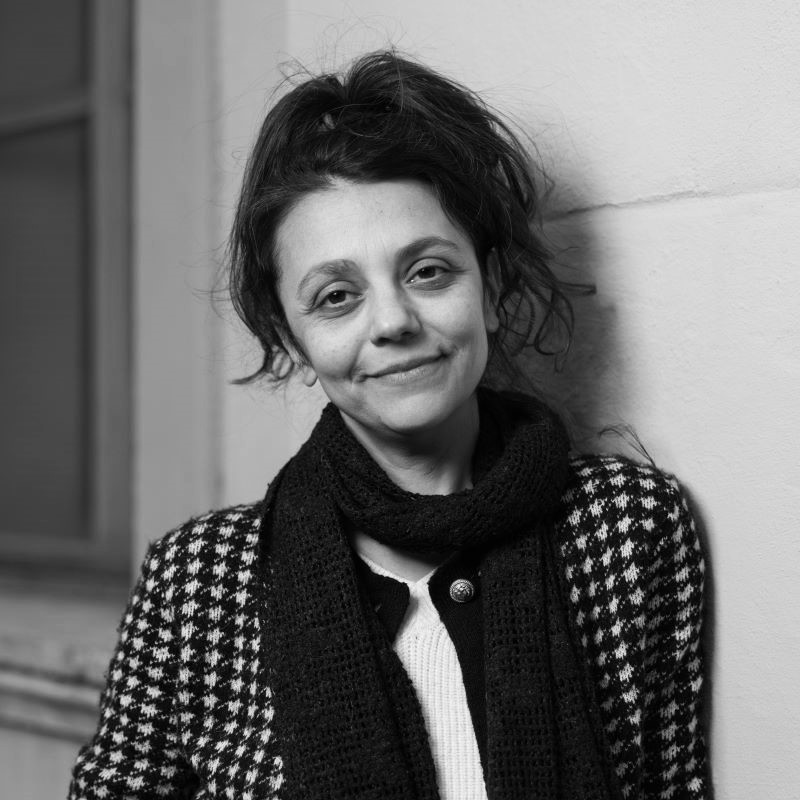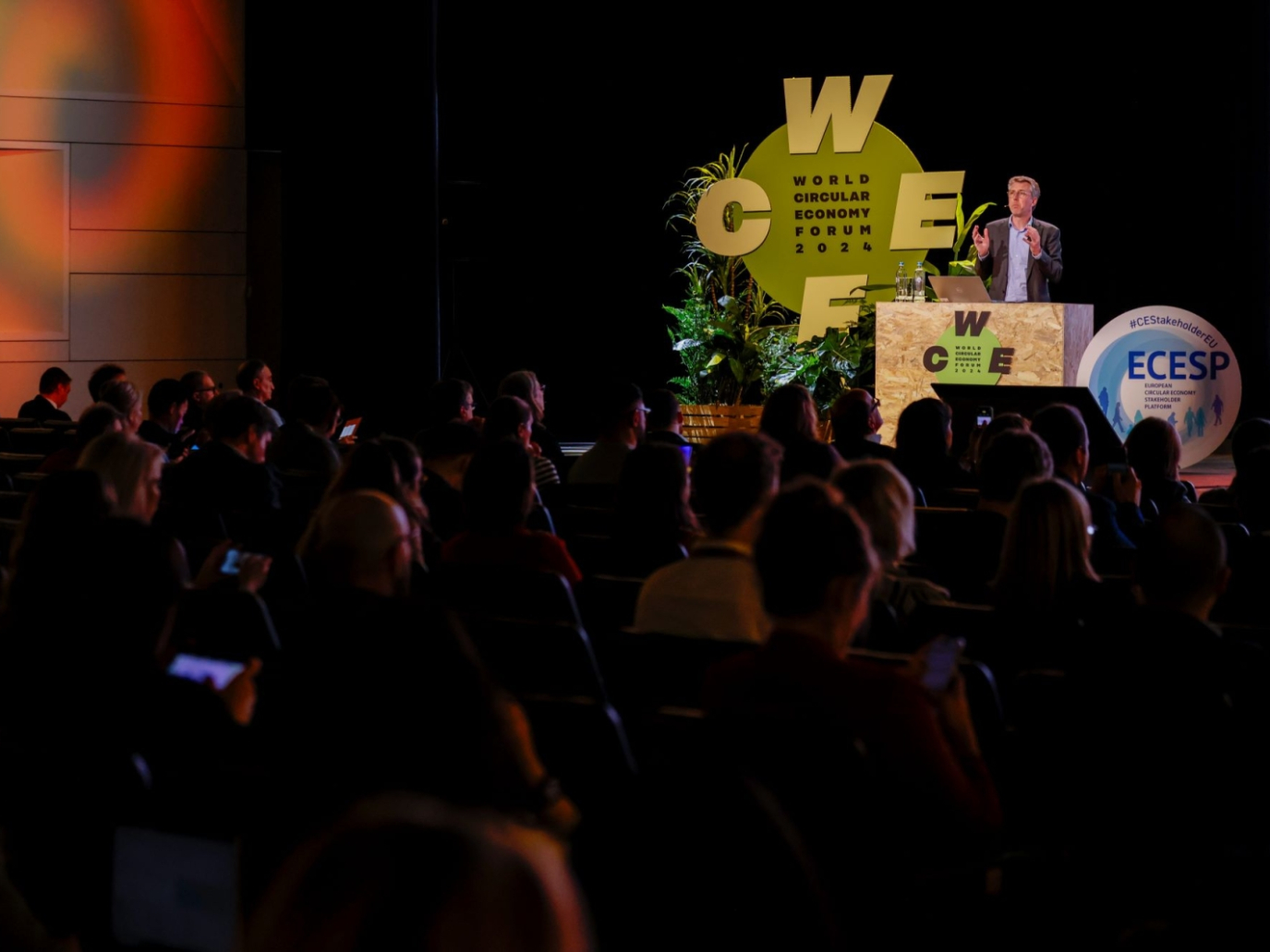(Brussels) Cooperation, connections, social justice, sustainable futures: in a world increasingly at war, the circular economy stands today as a tool for peace and equitable development. This is the powerful message that emerged from the seventh edition of the European Circular Economy Stakeholder Conference, strengthened this year by the conjunction with the World Circular Economy Forum, now in its eighth edition.
From April 15-18, at the labyrinthine The Square convention center in the heart of Brussels, 150 speakers and 1,500 participants (with 8,000 more connecting remotely) from over 100 countries (including large delegations from China, India and Brazil) gathered to discuss policies, tools and best practices for a global circular transition. The four intense days of packed plenary sessions, workshops, panel discussions and networking had the aim of building bridges, particularly between Europe and what is now called ‒ partly for fashion, but mostly as opposed to an obsolete geopolitical set-up that the world is shaking off ‒ the Global South.
The conference concluded with the announcement of two major initiatives that aim precisely at this goal: the creation of a new Circular Economy Resource Center to facilitate partnerships between the EU and third countries and the five-year program SWITCH to Circular Economy in East and Southern Africa, financed with 40 million euros to promote the circular transition on the African continent. Renewable Matter was in Brussels to gather voices and trends and to meet with the architects of the circular "contagion" that is spreading across the globe.
The first seven years of the Stakeholder Platform
Kicking off the four-day event in Brussels was the annual workshop of the European Circular Economy Stakeholder Platform, the beating heart of the transition to a new economic model. Established seven years ago at the initiative of the European Economic and Social Committee in collaboration with the EU Commission, the platform is now a key tool for connecting those working "on the ground," the stakeholders of the circular revolution, with policymakers.
"Our initial goal was to spread the word about the circular economy", tells us Cillian Lohan, co-founder and enthusiastic promoter of the platform, while sitting at a table among the exhibition booths. Lohan, who served as vice president of the EESC until 2023, has been working from the beginning to ensure that the Stakeholder Platform would not become yet another "talking shop," but would maintain instead a pragmatic spirit anchored in reality. "We didn't want to create a talking shop, a space where people get together once a year, chat about the circular economy and then go home, leaving everything behind. Instead, we wanted to do something to help participants truly become more circular. And that's why every one or two months we evaluate together the goals and progress each participant has made."
Another important aspect of the platform is that it is a reference point for all circular know-how. "There's always a need for a place to find information, and I've realized that during the conference," Lohan explains. "There are more and more people joining the journey to circularity, coming and asking under their breath: what is the circular economy? How does it work? It's understandable, I was in that situation myself years ago."
However, the initiative's fundamental role remains that of a "network of networks", a virtual and physical place to make connections and promote cooperation, the true soul of the circular economy. ECESP brings together many worlds: business, academia, think-tanks, NGOs, governments and politics. "At the EESC we liaise with the European Commission and organize the meetings," continues Lohan, "but the initiatives come from the stakeholders and reflect their needs. These are not institutional projects born in the Brussels 'bubble' for which there is no real demand. They are proposals that arise from concrete needs and emerge from the discussion and interconnection between the various stakeholders in the sector. In short, we steer the ship, but the real captains are the stakeholders."
For a circular and inclusive transition
The world has enough for everyone's need, not for everyone's greed Mahatma Gandhi's famous quote, recalled by International Resource Panel co-chair Janez Potocnik, was perfect to introduce the theme that ran through the entire convention: the Just Transition.
"Resource exploitation is now the cause of 60 percent of climate impacts, 40 percent of health impacts from pollution, and 90 percent of biodiversity loss and water stress related to land use change," Potocnik explained, rattling off data from the latest Global Resources Outlook released in March. However, the responsibilities for this situation are not shared equally among all the Earth's inhabitants: "Low-income countries consume six times less materials and generate 10 times fewer climate impacts than high-income countries," yet in most cases suffer the most devastating consequences of the climate and environmental crisis.
That the change is necessary is now well known and accepted. What still needs to be emphasized is that this transformation will have to be equitable and leave no one behind. "We must be aware that there will be people who will be affected by the transition, who will lose their jobs. That is why we need to reinforce the social justice aspect," said Al-Hamndou Dorsouma, head of the African Development Bank's (AfDB) Climate Change and Green Growth division.
Between panel discussions Dorsouma explained that the AfDB launched its circular economy program in 2019, with three main objectives: to help African states defining circular roadmaps tailored to their needs, to support small and medium-sized enterprises and startups, and to promote the concept of circular economy by supporting the work of the African Circular Economy Alliance. "There are obstacles, however ‒ he added ‒ and they are mainly financial. They concern the perceived risk for investment in African countries and high interest rates for loans. Africa has great potential and sees the circular economy as a development strategy. But first we need to overcome these barriers."
Finance, trade and cooperation
Overcoming financial barriers and attracting investment is key to turning fine words about inclusiveness into actual cooperation. This was addressed in several sessions of the forum, with the launch of strategic partnerships and funds for development and innovation, such as the European banks' Joint Initiative on Circular Economy and the SWITCH to Circular Economy in East and Southern Africa program, announced by European Commissioner for International Partnerships Jutta Urpilainen to a standing ovation. All excellent initiatives, but still too little compared to what would be needed and can only come from private capital. Then the question is, how to mobilize this capital?
"There is no shortage of money to invest, just think that $1.6 trillion a year goes to finance the linear economy. Then why are funds not flowing towards the circular economy?" wondered Andrea Liverani, a specialist in environmental policy and natural resources for the World Bank. "There are several problems," he explained, "Circular business models are relatively new and still poorly understood by investors, and they have risks: they are not 'bankable' projects. There is still a lack of expertise. Also, virgin raw materials still cost less than recycled ones." What's the solution? According to Liverani, it comes through policy change and fiscal reform: "We need to tax labor less and resource usage more."
On how to attract private capital to countries in the Global South, Milagros Rivas Saiz of IDB invest Colombia has some ideas. “We need to adopt tools for de-risking, such as blended finance, and introduce shared international standards and common policies, such as Extended Producer Responsibility,” she said.
The alignment on international metrics and standards would also respond to an increasingly pressing request from the trade sector and help avoid the risk of protectionist measures against emerging markets, as WTO Trade and Environment Division Director, Aik Hoe Lim, pointed out.
After all, developing a truly effective circular economy requires thinking on a global scale, given that flows of materials (whether raw materials, products or waste) certainly do not stop at the borders of individual countries. "Connections and cooperation ‒ said Peter Schmidt, president of the EESC's Agriculture and Environment Section ‒ are essential to create true circular supply chains." Finally, as Colombian activist Slendy Diaz highlighted summarizing the meaning of the whole convention, "if the linear economy is based on competition, the circular economy is, on the contrary, based on collaboration."
This article is also available in Italian / Questo articolo è disponibile anche in italiano
Images: ECESP



